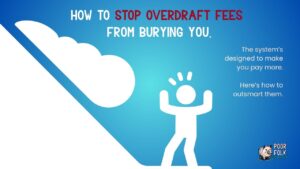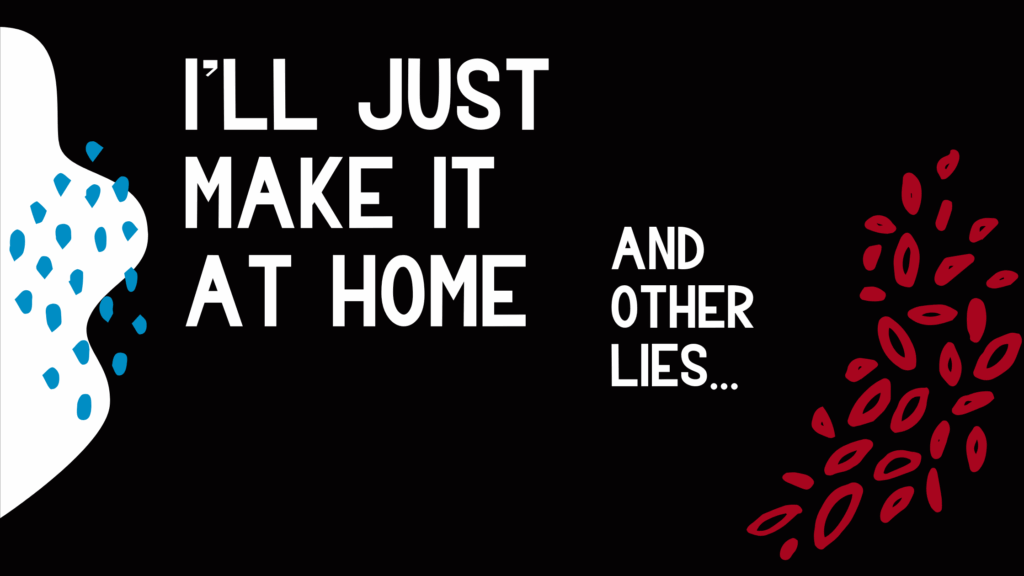If you’re living paycheck to paycheck, overdraft fees can feel like a financial avalanche. It starts small and ends with your whole bank account buried. And guess what? The banks are the ones on the ski lift, sipping cocoa while you’re stuck in the snow.

Overdraft fees aren’t just one-time mistakes. They’re repeat offenders. A $35 charge here, another $35 when your Netflix subscription hits, and suddenly you’re $100 in the hole for trying to buy a $4 coffee. It’s not just a mistake. It’s a system working as intended. But we’re not here to cry about it (okay, maybe a little). We’re here to stop the madness.
Understand How Overdraft Fees Work (So You Can Smash Them)
It’s Not You, It’s the System
Banks make billions every year from overdraft fees. They market “overdraft protection” like it’s a safety net, but it’s really a trap. Here’s how it works: you spend more than you have in your account, and instead of declining the transaction, your bank “helps” you by covering it… and then charges you a fee. Often, they’ll reorder your transactions so the largest one hits first to maximize how many smaller ones also trigger fees. Nasty.
The Fee Frenzy
Most banks charge around $35 per overdraft. Hit three small transactions in one day while you’re broke? That’s $105 in fees. And if you don’t bring your account back up fast enough, some banks charge a daily negative balance fee too. It’s a vicious cycle. And they know it. It’s designed that way.
Ways to Actually Stop Overdraft Fees (For Real)
1. Turn Off “Overdraft Protection”
Yeah, it sounds backwards. But the bank’s so-called “protection” is just a license to drain your wallet. If you opt out, your debit card will just decline if there’s not enough money. Is it embarrassing? Sometimes. Is it better than a $35 fee? Every time.
2. Set Up Low-Balance Alerts
Most banking apps let you set up text or email alerts when your balance drops below a certain point. Set it for $20 or whatever your safety threshold is. It’s not going to make you rich, but it’ll stop you from spending blind.
3. Use a Prepaid Debit Card
These aren’t perfect, but they don’t let you overdraft. You can only spend what’s loaded on the card. For people constantly toeing the edge, it’s one way to avoid getting slapped by fees.
4. Choose a Bank with No Overdraft Fees
There are actually some decent ones out there. They’re mostly online banks and credit unions, and that offer no-fee overdraft coverage or just decline transactions without charging you. If switching banks isn’t an option right now, keep this in your back pocket for later.
5. Link to a Backup Account
If you’ve got a savings account (even if it’s got like $10 in it), you can sometimes link it to your checking account. The bank will pull money from savings to cover your overdraft. There may still be a small fee, but it’s usually cheaper than the full overdraft charge.
Overdraft Fees Are a Symptom, Not the Disease
Let’s be real: overdraft fees happen because there’s just not enough money to go around. And while we can put band-aids on the bleeding, the real goal is to build up enough financial stability that you’re not skating the $0 line every week. Easier said than done, but every small change helps.
1. Start a Barebones Budget
Even if you’ve failed at budgeting before, a “no shame” budget can work. Write down only what absolutely has to be paid: rent, bills, food. Then see what’s left. It’s not fun, but it gives you a map of where your money’s going before the bank takes a cut.
2. Track Every Dollar for a Week
One week. That’s all. Just keep track of every penny you spend for seven days. You’ll probably spot a few things you didn’t even realize were draining your cash. Maybe a few random gas station snacks or a quick take-out meal on the way home from a busy day. Awareness is the first step.
3. Automate Tiny Savings
Some apps let you round up purchases and put the change into savings. Or you can automate a $1 daily transfer to savings. It’s small, but small grows over time, and it can help you avoid overdrafts down the line.
If You’re Already Drowning in Fees…
You’re not alone. Call your bank. Seriously. They might waive one or two overdraft fees if you’ve got a good record (or you cry on the phone. No judgment here, and sometimes you just can’t help it, right?). Some banks even have forgiveness programs if you ask the right way.
Also, check if you qualify for local financial assistance, food banks, or utility help. Freeing up even a little bit of money in other areas can give your account the breathing room it needs to stop falling into overdraft hell.
Conclusion: The Avalanche Can Be Stopped
Overdraft fees are one of those sneaky, small things that feel like no big deal—until they snowball and bury you alive. But now that you know how to stop overdraft fees, you’ve got power. Cancel that fake “protection,” pick a better bank if you can, and keep an eye on your balance like it owes you money (because it does).
You don’t need to be rich to stop the bleeding. You just need to be informed and a little bit stubborn. And you’ve already made it to the bottom of this post, so clearly, you’re both.

